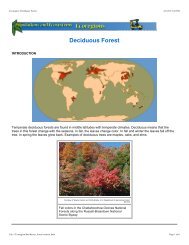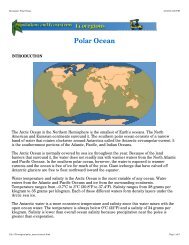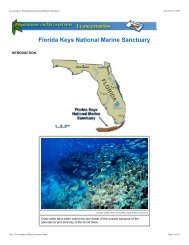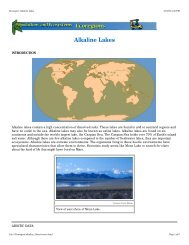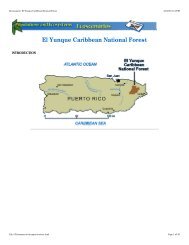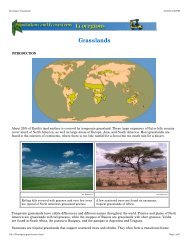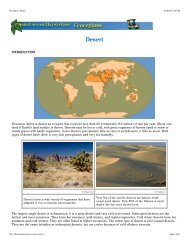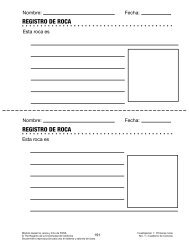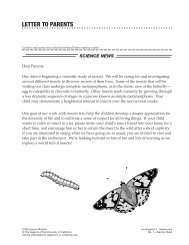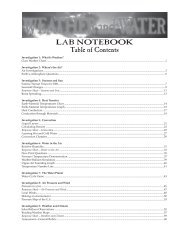Ecoscenarios Combined - FOSSweb
Ecoscenarios Combined - FOSSweb
Ecoscenarios Combined - FOSSweb
You also want an ePaper? Increase the reach of your titles
YUMPU automatically turns print PDFs into web optimized ePapers that Google loves.
Ecoscenario: Everglades National Park<br />
4/16/03 3:15 PM<br />
Courtesy of Phil Stokoe<br />
The spoonbill uses its flattened bill to sift<br />
through the muddy bottom in search of tiny<br />
invertebrates.<br />
Courtesy of George Gentry, U.S. Fish and Wildlife Service<br />
Florida panthers are one of the endangered species that<br />
live in the Everglades. Panthers need a large area to<br />
roam for food and mates. Water diversion has changed<br />
the amount of area suitable for these large cats.<br />
History of water issues in the Everglades<br />
Water of the Everglades used to flow uninterrupted from Lake Okeechobee to the southern tip of Florida and out into<br />
the Atlantic Ocean and the Gulf of Mexico. The river flowed continuously, with heavier flow during the wet season.<br />
As people began to settle in Florida, the desire for land began an effort to drain the "useless swamp" to open up<br />
more land for agriculture and cities. The draining of the Everglades began in 1906. As the population of Florida grew,<br />
the demand for water for drinking and agriculture also grew.<br />
Art Explosion<br />
Water diversion structures have changed how water<br />
flows through Florida and the Everglades.<br />
Courtesy of U.S. Geological Survey<br />
Canals drain water from wetlands and divert it to<br />
reservoirs to be used by cities or for irrigation.<br />
In 1948, a year after the establishment of Everglades National Park, Congress created the Central and South<br />
Florida Project. The Army Corps of Engineers began building a network of roads, canals, levees, and water-control<br />
structures across southern Florida. As more dry land was created, areas were opened for agriculture and increased<br />
urban development. Crops, such as rice and sugar cane, that are suited to the hot and wet climate flourished.<br />
Congress also set aside the northern section of the Everglades ecosystem for agriculture. This section, planted with<br />
file:///Ecoscenario/everglades/content.html<br />
Page 11 of 17



